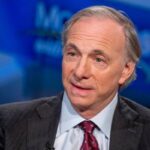Wall Street hates uncertainty. But that’s exactly what investors are wrestling with as President Donald Trump continues to send mixed messages on his aggressive tariff policies.
Most recently, his administration announced a 90-day pause on a wide-ranging set of "reciprocal" tariffs, save for those levied on China. A baseline 10% tariff remains in place, however, as do 25% tariffs on certain categories of goods from Canada and Mexico.
Don’t miss
- I’m 49 years old and have nothing saved for retirement — what should I do? Don’t panic. Here are 5 of the easiest ways you can catch up (and fast)
- Gain potential quarterly income through this $1B private real estate fund — even if you’re not a millionaire. Here’s how to get started with as little as $10
- Car insurance premiums could spike 8% by the end of 2025 — thanks to tariffs on car imports and auto parts from Canada and Mexico. But here’s how 2 minutes can save you hundreds of dollars right now
Tariffs, essentially taxes on imports, are designed to level the trade playing field and protect domestic industries.
But they raise costs for businesses and consumers, disrupt global supply chains and strain diplomatic relationships. All this shakes investor confidence, leading to volatility and downturns on Wall Street.
Within two days of Trump’s global tariffs announcement, the S&P 500 tumbled 13% — well into correction territory. Economists were ramping up their recession forecasts. The markets rebounded following the 90-day-pause announcement, but uncertainty remains.
Could his trade war tip the stock market into a full-blown meltdown? History suggests things could definitely get much worse.
How the S&P 500 behaves in a recession
The S&P 500 tracks 500 large U.S. companies that represent 80% of U.S. equity market value. Its performance is often synonymous with "the market," making it a core holding in 401(k)s, IRAs, and target-date funds.
The index typically sees significant declines during economic downturns. For instance, the S&P plummeted by 49% during the tech bubble burst in the early 2000s, by 57% during the Great Recession (2007–2009), and saw a swift 34% decline during the relatively brief COVID-19 crash in 2020.
What these historical insights suggest is that the current dip could be the tip of the iceberg. Investors could face serious financial setbacks.
Older investors might find their retirement nest eggs shrinking at the very moment they planned to rely on them, triggering anxiety and difficult decisions.
Panic? How to handle your investments now
As stock markets plummet, many investors’ first instinct is to pull money out and stash it in cash or safer assets. But timing the market — trying to predict peaks and troughs — is notoriously challenging and typically backfires.
Read more: Want an extra $1,300,000 when you retire? Dave Ramsey says this 7-step plan ‘works every single time’ to kill debt, get rich in America — and that ‘anyone’ can do it
Instead, consider these smarter, more strategic moves:
- Stay diversified. Spread your investments across asset classes — stocks, bonds, cash, real estate — to mitigate risks. If one sector tanks, your entire portfolio won’t go down with it.
- Evaluate your risk tolerance. Are you losing sleep over market swings? You might be overexposed to stocks. Consider shifting to bonds or other safer, income-generating investments to provide stability.
- Don’t stop investing. If you’re younger, a downturn can actually benefit your portfolio long-term as you can buy shares at discounted prices. Taking advantage of dollar-cost averaging as you continue to invest regularly means you’re setting yourself up for greater returns when markets rebound.
Nearing retirement? How to protect your nest egg
If you’re close to retirement, market turmoil feels particularly personal and understandably scary. A big market drop is devastating when you’re planning to rely on your investments soon. But panic selling can lock in losses permanently.
Instead, take proactive steps to safeguard your retirement funds,
- Review your allocation. Typically, as you approach retirement, your portfolio should shift toward lower-risk investments. Consider moving a larger portion into bonds, treasure securities or high-quality dividend stocks that tend to be less volatile.
- Maintain liquidity. Keep enough cash or easily accessible funds to cover at least two years of living expenses. This approach means you won’t be forced to sell investments at unfavorable prices to meet immediate financial needs.
- Consider professional advice. If you don’t already have a financial advisor, now might be the time. A professional can provide personalized strategies tailored specifically to your retirement goals and comfort with risk.
Investors at every stage – whether young and growing their wealth or nearing retirement – can and should take proactive, thoughtful measures to recession-proof their portfolios.
Ultimately, the key is balance. Don’t overreact, but don’t underestimate the potential risks.
With strategic diversification, regular investment habits, and professional guidance, you can navigate the turbulence ahead, protecting your finances against the fallout from Trump’s tariff turmoil.
What to read next
- Thanks to Jeff Bezos, you can now become a landlord for as little as $100 — and no, you don’t have to deal with tenants or fix freezers. Here’s how
- Here are 5 ‘must have’ items that Americans (almost) always overpay for — and very quickly regret. How many are hurting you?
- Trump warns his tariffs will spark a ‘disturbance’ in America — use this 1 dead-simple move to help shockproof your retirement plans ASAP
This article provides information only and should not be construed as advice. It is provided without warranty of any kind.







